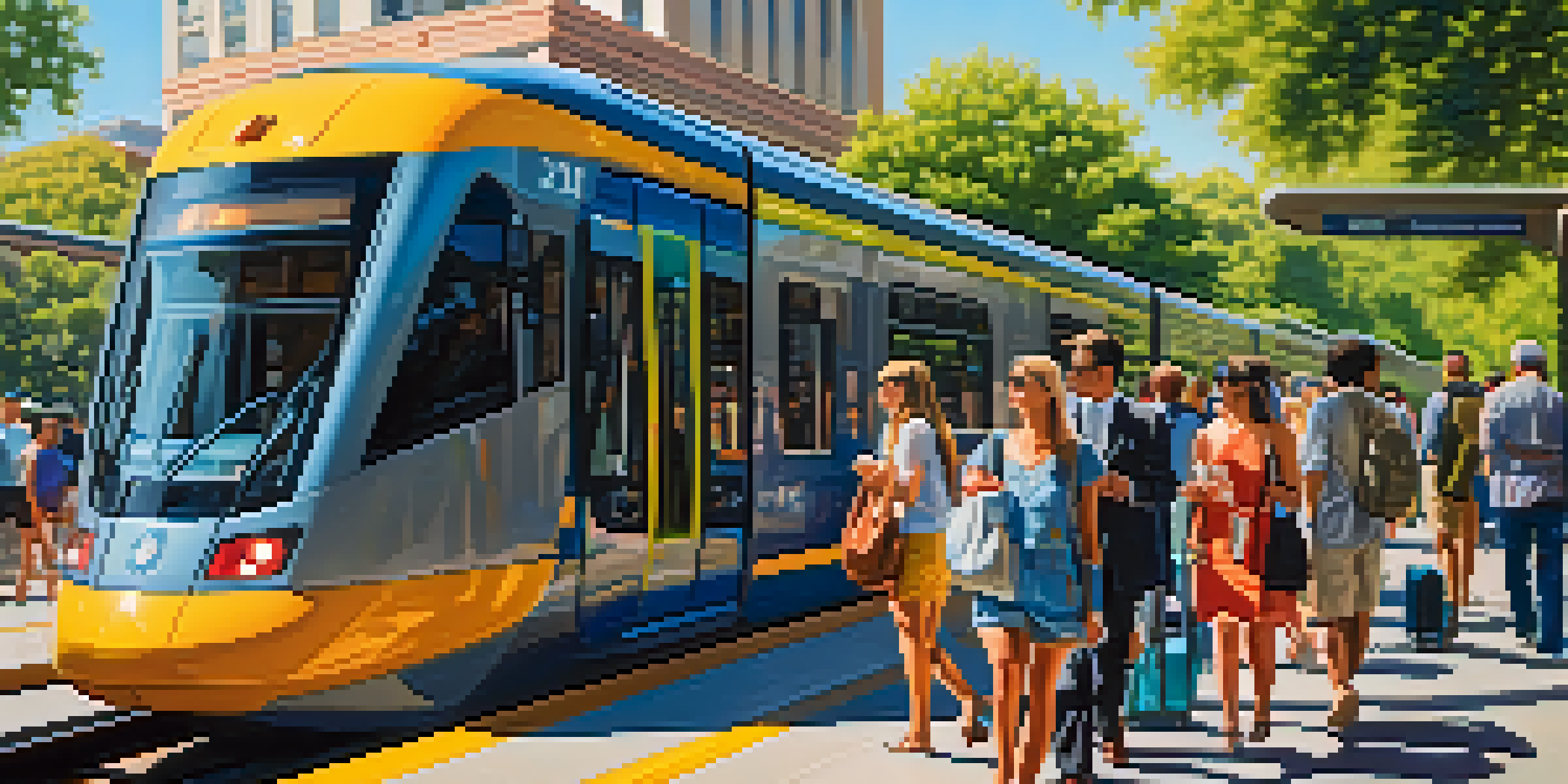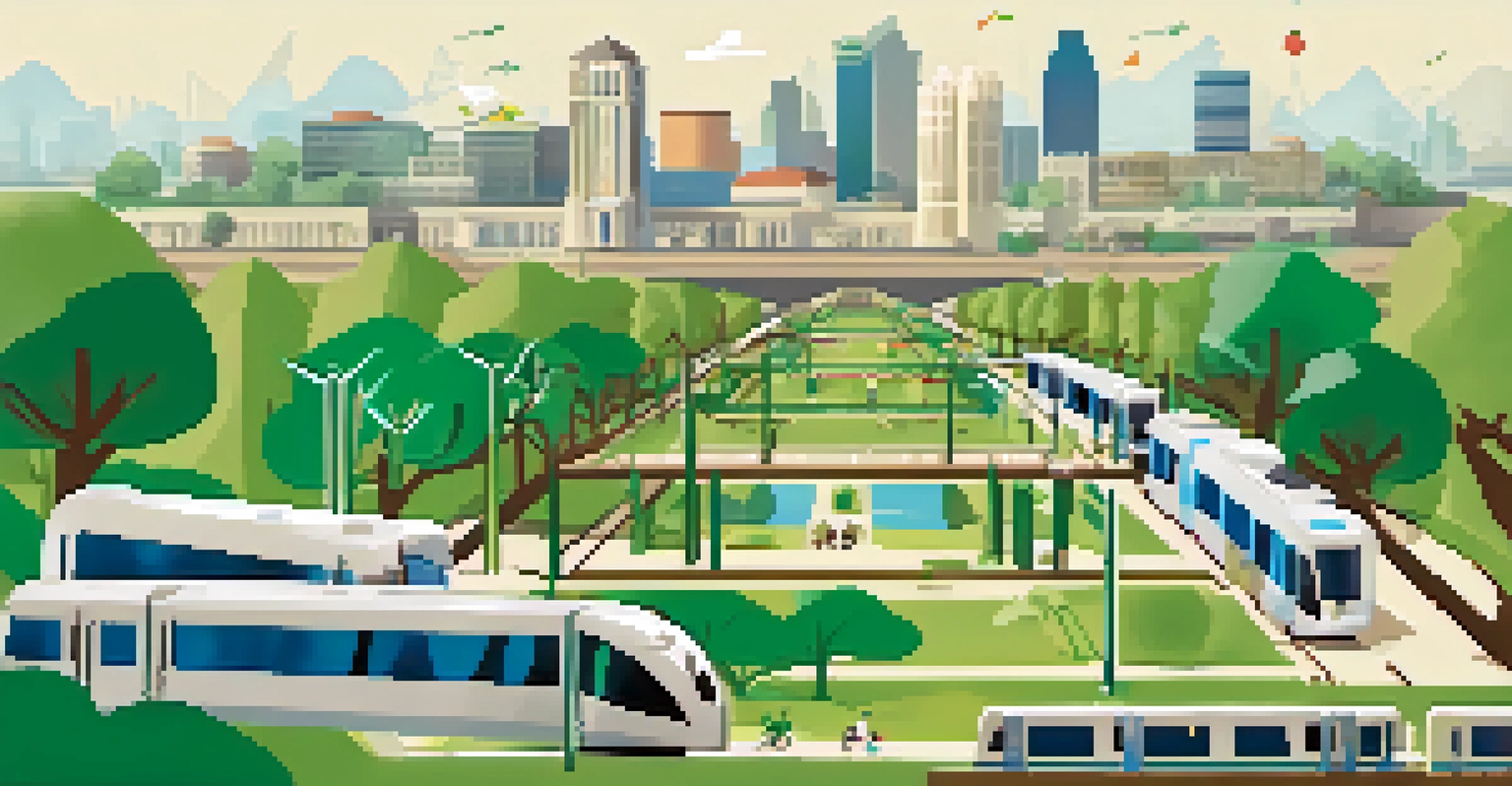Comparing Public Transit Systems: Light Rail vs. Buses in Sacramento

Overview of Sacramento's Public Transit Landscape
Sacramento boasts a diverse public transit system, primarily made up of buses and light rail. Both options are vital for commuters and residents seeking accessible transportation. Understanding their differences helps users make informed choices that suit their needs.
Public transport is the lifeblood of urban centres, connecting people to opportunities and each other.
Light rail, operated by Sacramento Regional Transit, offers a fixed route and runs on tracks, providing a smooth ride across key city areas. On the other hand, buses are more flexible, able to navigate through various streets and neighborhoods, accommodating a wider range of destinations.
Ultimately, both systems aim to reduce traffic congestion and promote sustainable travel. However, they cater to different preferences and commuting styles, making it essential to weigh their unique benefits.
Understanding Light Rail: Benefits and Drawbacks
Light rail systems are often praised for their efficiency and reliability. With dedicated tracks, they typically experience fewer delays caused by road traffic, allowing for more predictable travel times. This can be particularly beneficial for those with tight schedules.

However, light rail can have its disadvantages. It requires significant upfront investment in infrastructure and may not reach as many locations as bus routes. Additionally, if a rider's destination is not near a light rail station, they may need to rely on other transit options to complete their journey.
Light Rail vs. Buses: Key Benefits
Both light rail and bus services offer unique advantages, catering to different commuting styles and preferences.
In terms of user experience, light rail offers a comfortable ride with fewer stops, which can make it an appealing choice for longer commutes. Yet, the limited reach of light rail can be a drawback for some, depending on individual travel needs.
Exploring Bus Services: Versatility and Accessibility
Buses are often seen as the workhorses of public transit, providing a vast network that connects various neighborhoods and destinations. Their flexibility allows them to adapt routes based on demand, ensuring that residents have access to essential services and amenities.
Sustainable transport is crucial for our cities to thrive, reducing congestion and pollution while enhancing quality of life.
One of the significant advantages of buses is that they can reach places where light rail simply cannot. This makes bus services crucial for those in outlying areas or neighborhoods without direct light rail access. For many, the bus is the most convenient option to get to work, school, or local attractions.
However, while buses are versatile, they can be subject to traffic congestion, leading to delays. This can be frustrating for commuters who rely on punctuality. Yet, many bus routes run frequently, which can help mitigate long wait times.
Cost Analysis: Which Option is More Affordable?
When it comes to affordability, both light rail and bus services offer competitive fare structures. In Sacramento, a single ride on either mode of transportation is generally affordable, making it accessible for daily commuters. However, pricing can vary based on distance and type of service.
For regular riders, monthly passes can provide substantial savings, especially for those who depend on public transit for work or school. Light rail and bus systems often offer discounts for students, seniors, and individuals with disabilities, ensuring that everyone can benefit from public transportation.
Cost-Effective Transit Options
Affordable fare structures and monthly passes make both light rail and buses accessible for daily commuters.
Overall, while individual costs are manageable, the choice between light rail and buses may depend on a rider's specific travel patterns and budget. Evaluating both options can help transit users optimize their spending while meeting their transportation needs.
Environmental Impact: Public Transit and Sustainability
Both light rail and buses play crucial roles in promoting sustainable transportation solutions. By reducing the number of cars on the road, these public transit options help lower greenhouse gas emissions and alleviate air pollution in urban areas. This is essential for creating a healthier environment for communities.
Light rail systems often have a smaller carbon footprint per passenger compared to buses, especially when powered by renewable energy sources. However, modern buses are increasingly adopting eco-friendly technologies, such as hybrid and electric models, further reducing their environmental impact.
Choosing public transit over personal vehicles not only benefits individual riders but also contributes to a larger goal of sustainable urban living. By supporting public transit, residents can help shape a greener future for Sacramento.
User Experience: Comfort and Convenience Factors
When evaluating public transit options, user experience is key. Light rail systems often provide a smooth and comfortable ride, with spacious seating and fewer stops. Riders may appreciate the stability and quietness of traveling on tracks, especially during longer journeys.
Buses, while versatile, can sometimes feel cramped, particularly during peak hours. However, the convenience of bus stops being located closer to residential areas or workplaces can make them a more appealing choice for many riders. It’s all about weighing comfort against convenience.
Sustainable Urban Transportation
Public transit, including light rail and buses, significantly contributes to reducing greenhouse gas emissions and promoting a healthier environment.
Ultimately, personal preferences will play a significant role in determining which mode of transit feels best. Some may prioritize comfort and a smooth ride, while others might value the convenience of quick, direct access to their destinations.
Future of Public Transit in Sacramento: Trends and Innovations
As Sacramento continues to grow, so does the need for an efficient public transit system. Innovations in technology, such as real-time tracking apps and smart payment systems, are making the experience more user-friendly for both light rail and bus riders. These advancements are crucial for attracting more users.
Future plans for expanding light rail and improving bus routes are in the works, with city officials focusing on enhancing connectivity and accessibility. This could include adding new stops, increasing frequency, or even implementing dedicated bus lanes to reduce travel times.

The future of public transit in Sacramento looks promising, with a focus on sustainability and user experience. By investing in both light rail and bus systems, the city aims to create a robust network that meets the evolving needs of its residents.